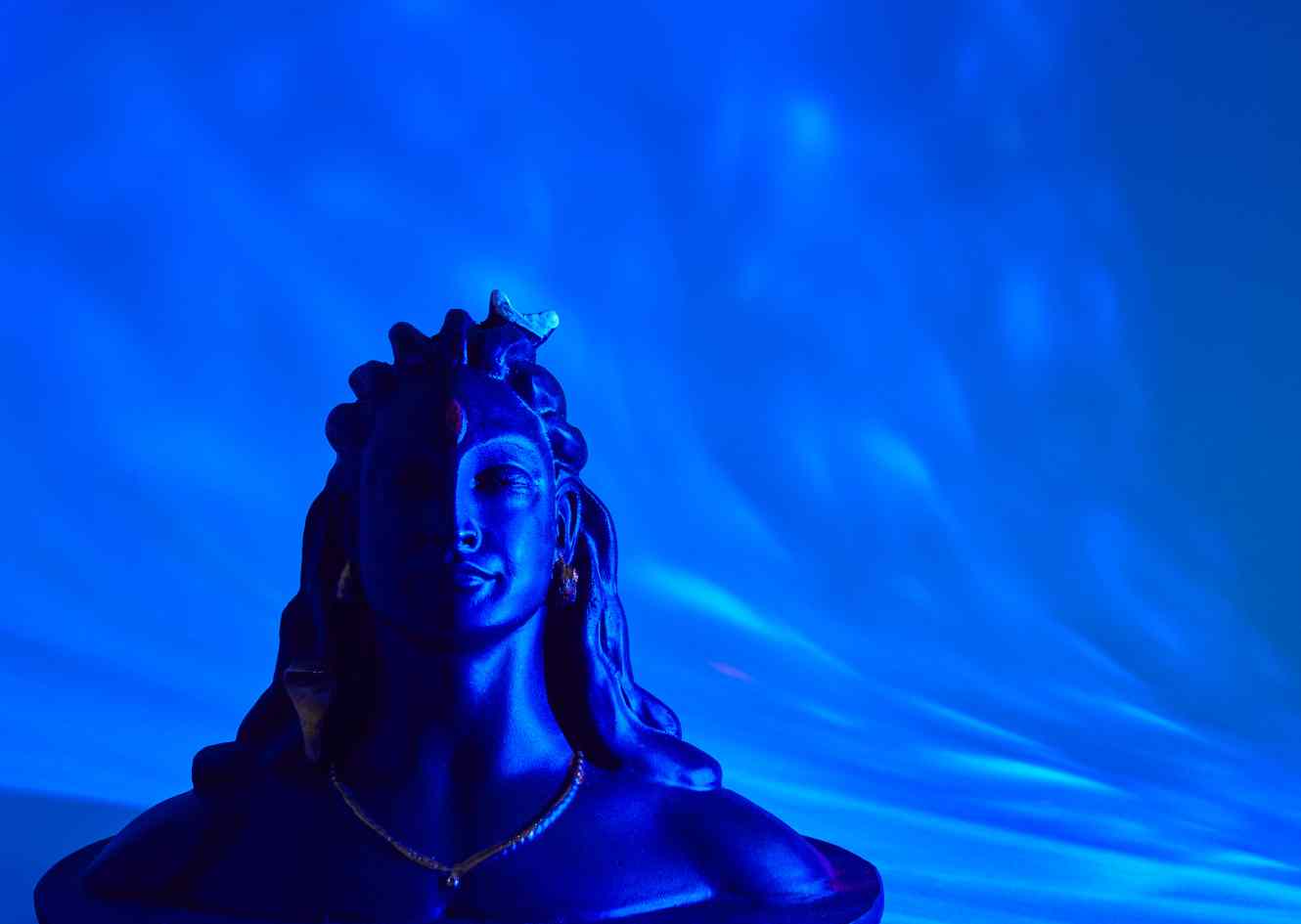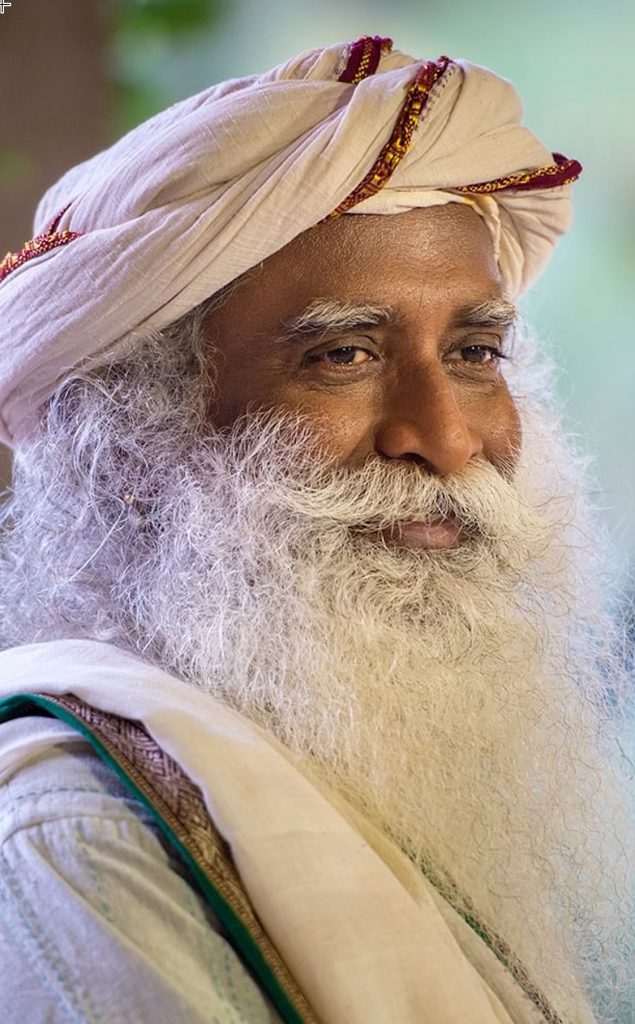Lord Shiva – That Which Is Not – Is The Most Powerful

Lord Shiva is one of the primary deities in Hinduism and is a part of the holy trinity (Trimurti) alongside Lord Brahma, the creator, and Lord Vishnu, the preserver. Shiva is often called “the destroyer and transformer,” but his role is complex and transcends the creation, preservation, and destruction cycle. He is also associated with Yoga, meditation, and arts.
In Hindu mythology, Lord Shiva plays multiple roles. As the destroyer, he is associated with the end of each cycle of creation to prepare for a new cycle. But his destruction isn’t arbitrary or malign; instead, it is necessary for renewal and change.
Shiva is also considered the great ascetic, practicing meditation and self-discipline in the Himalayas. He’s seen as the lord of Yoga and meditation, granting wisdom and understanding. This aspect contrasts with his ferocious destructive powers, showing his multifaceted nature.
Shiva is often depicted in a yogic posture with a trident in his hand, a serpent around his neck, and a crescent moon adorning his head. He usually sits on a tiger skin with the Ganges river flowing from his hair. His third eye on the forehead, which, when opened, is believed to annihilate everything in its sight, symbolizes spiritual wisdom and power.
Another important symbol associated with Shiva is the ‘lingam,’ an aniconic representation often found in temples dedicated to him. It represents divine generative energy, especially a union of oppositeness, signifying Shiva’s dual nature as destroyer and reproducer.
Shiva’s consort is Goddess Parvati (also known as Shakti), the goddess of power and energy. Their union represents the union of power and energy, the masculine and the feminine, and it is often used to symbolize the idea that power is inseparable from the divine. Shiva and Parvati have two sons, Ganesha, the lord of wisdom and remover of obstacles, and Kartikeya, the god of war.
The Swayambhu
“Swayambhu” is a Sanskrit term that translates to “self-manifested” or “self-existent.” In the context of Lord Shiva, describing him as Swayambhu means that he is believed to have manifested himself, not being created by any other entity or force.
Hindu philosophy often presents the concept that the divine or supreme reality is self-existent, without a beginning or end. When applied to Shiva, this concept suggests that Shiva, as the fundamental reality or pure consciousness, is eternal and self-created. He is often represented as a linga, which symbolizes this eternal nature.
Shiva being Swayambhu, is also often associated with the idea that Shiva represents the very fabric of existence and the source of everything. As such, he is not a creation of this world but rather the foundation upon which the world and the universe manifest. This idea underscores the profound significance of Shiva in Hindu cosmology and metaphysics.
Lord Shiva As Adi Yogi
Sadhguru Jaggi Vasudev often speaks about Shiva as a god, the Adi Yogi (the first yogi), and the Adi Guru (the first Guru). Sadhguru’s interpretations of Shiva are often centered around understanding the nature of the universe and human well-being.
According to Sadhguru, Shiva, as the Adi Yogi, is the origin of Yoga. Over 15,000 years ago, Shiva attained his full enlightenment and sat in intense ecstasy. When his ecstasy allowed him to sit still for many years, other beings noticed him. Intrigued by him, seven individuals, referred to as the “Saptarishis” or seven sages, came to him. Seeing the sincerity of their approach, Shiva took them as his first disciples and started teaching them the mechanics of life, thus becoming the Adi Guru.

Sadhguru often emphasizes that Shiva is not a person or a physical being but a principle or dimension of the Infinite that defies all definitions. ‘Shiva,’ Sadhguru says, literally means ‘that which is not.’ So Shiva is described as a non-being, not as a being.Sadhguru often emphasizes that Shiva is not a person or a physical being but a principle or dimension of the Infinite that defies all definitions.
Sadhguru also refers to Shiva as the “ultimate outlaw” because rules or social norms do not bind Shiva. He acts out of understanding and awareness of the system of life and not out of subservience to social standards. It symbolizes absolute freedom and the possibility of liberation (mukti) for everyone.
In Sadhguru’s interpretation, Shiva is also the ultimate icon who defies all norms. His image of an ash-smeared ascetic and a family man, a dancer (Nataraja), and a fierce destroyer captures life’s essence and the universe’s dynamic nature.
Sadhguru uses the term “that which is not” to refer to Shiva, exploring a dimension of existence that isn’t easily understood in common physical or material terms. This phrase underlines the idea that Shiva is not a deity in the traditional sense but a representation of the limitless, formless, void, or ultimate emptiness.
In various spiritual traditions, this concept of “that which is not” is a way to articulate the idea of a transcendent reality that goes beyond physicality, beyond what can be perceived, measured, or understood by the senses or the mind. It is often associated with the absolute, the source of everything, or the ultimate reality, which is formless and all-encompassing.
Sadhguru often describes the universe as consisting of “something” and “nothing.” “Something” represents the physical reality we can see, touch, and measure. In contrast, “nothing” or “that which is not” represents the vast emptiness or space that holds this physical reality. According to modern physics and ancient spiritual philosophies alike, this “nothingness” or emptiness is, in fact, a profound source of energy and creation.
So when Sadhguru says Shiva is “that which is not,” he refers to Shiva as the unmanifested, the limitless, the eternal emptiness that is the source of all creation. This interpretation is not about Shiva as a physical entity or person but as a metaphysical principle or dimension beyond human comprehension.
Shiva Shakti
In Sadhguru’s teachings, Shiva and Shakti represent the two fundamental aspects of existence. As discussed earlier, Shiva symbolizes “that which is not,” a dimension of formless, limitless existence or pure consciousness. On the other hand, Shakti stands for “that which is” the dynamic, creative force that makes existence experienceable; it represents the creation or the manifest world that we perceive around us.
Sadhguru often describes Shiva as the ultimate emptiness or nothingness from which everything else arises. It’s the fundamental reality that is unchanging and eternal. Shiva is not viewed as a god or deity in the traditional sense but as a boundless void that holds everything.
In Sadhguru’s interpretation, Shakti is the feminine aspect that brings everything into existence. She is energy, power, creativity, and the material aspect of existence. Shakti is responsible for creating the physical universe and all its experiences.
Sadhguru emphasizes that Shiva and Shakti are not separate entities but aspects of the same reality. They represent the duality inherent in existence – the unmanifest and the manifest, the formless and the form, the static and the dynamic. This dual aspect is necessary for creation. Without the static aspect, there would be no foundation for creation. With the dynamic aspect, there is a possibility of creation.
In many traditional depictions, Shiva and Shakti are shown in a state of intimate union, symbolizing the non-duality of existence. It symbolizes that creation and creator, the physical and the metaphysical, are not separate but are two facets of the same reality.
In a spiritual context, the ultimate aim of a seeker is to achieve a state where one can experience this non-duality, to realize that the individual self (often identified with Shakti – the physical, the manifest) and the universal self (Shiva – the formless, the unmanifest) are the same.
Festivals Dedicated to Lord Shiva
Numerous festivals are dedicated to Lord Shiva throughout the year, celebrated with great zeal and enthusiasm by his devotees across India and the world.
Translating to “the Great Night of Shiva,” Maha Shivratri is one of the most important Hindu festivals dedicated to Lord Shiva. It is celebrated on the 13th night and 14th day of the lunar month, usually in February or March. Devotees fast and keep a night-long vigil, often singing hymns and praises in the name of Lord Shiva. Temples are adorned with flowers, and the Shiva Linga, a symbol of Shiva, is bathed with milk, honey, and water.
Shravan’s entire month (usually between July and August) is dedicated to Lord Shiva. According to the Hindu calendar, Shravan month is when the cosmos manifests an upsurge of energy. Shravan is considered very auspicious for worshiping Shiva to gain his blessings. Many devotees fast every Monday of this month, a day traditionally associated with Lord Shiva.
Celebrated in the Shravan month, Nag Panchami is a festival dedicated to the serpent god, Nag, who is considered an ardent follower of Lord Shiva. On this day, serpents or images of serpents are worshiped.
This festival, mainly observed by women, is dedicated to Goddess Parvati to commemorate her union with Lord Shiva. While Teej focuses on Goddess Parvati, Lord Shiva is also worshiped today. The festival is marked by fasting, singing, and dancing.
Karthik Purnima is celebrated on the full moon day of the Karthik month (October-November). It is believed that Lord Shiva killed the demon Tripurasura on this day. Therefore, it is also known as Tripuri Purnima.
Pradosham is a bimonthly occasion on the Hindu calendar’s thirteenth day every fortnight. It’s dedicated to Lord Shiva and is observed with fasts and Poojas in the evening twilight.
Sadhguru has emphasized that Hinduism does not worship individuals as gods but rather sees divinity as a potential within every individual. According to his teachings, the divine is not an entity to be reached but a potential to be realized. So, in this context, any human could realize the consciousness associated with Shiva.
